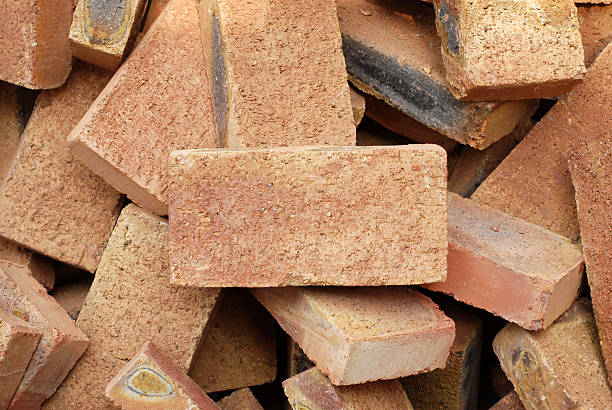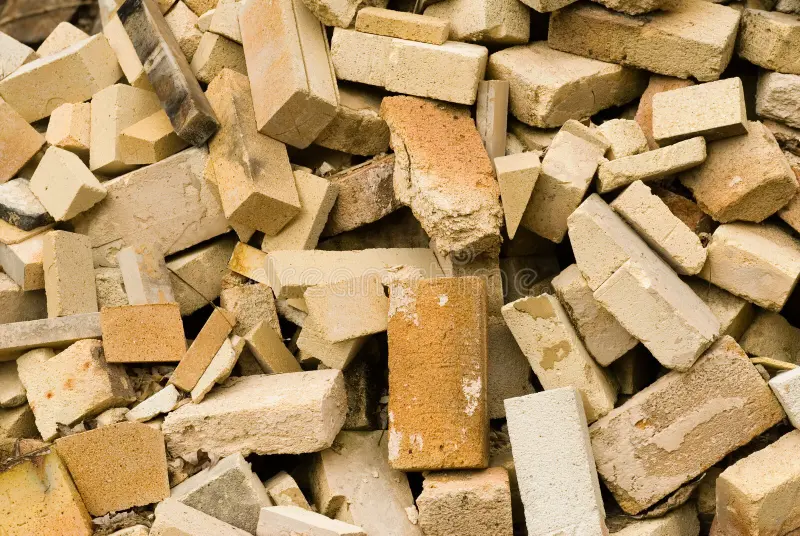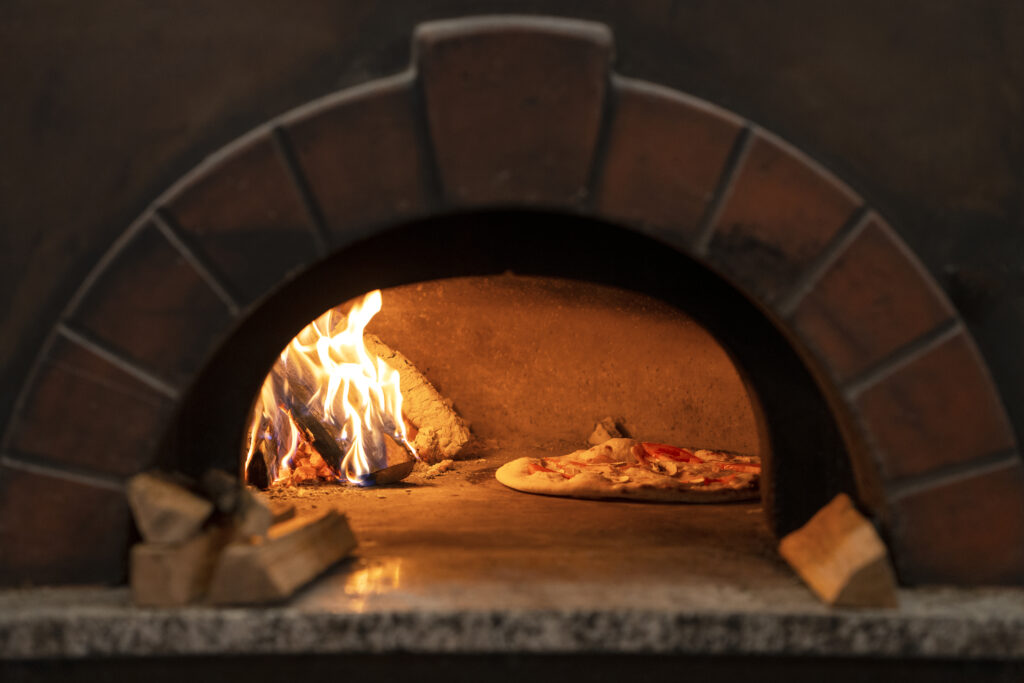INTRODUCTION TO FIRE BRICK
These , often referred to as heat-resistant bricks, are specially crafted to endure or tolerate extreme temperatures, making them ideal for applications like furnaces, kilns, pizza ovens, fireplaces, and various industrial environments. These bricks not only resist heat but also maintain their strength, shape, and durability even in the brutal conditions.
WHAT IS FIRE BRICK ?
A fire brick is a unique type of brick made from alumina and silica, designed to bear the high temperatures (typically up to 1800°C or even more). Unlike standard bricks, these won’t crack or deform in high-heat areas, making them crucial for thermal insulation and fireproof construction.
KEY FEATURES :
Heat resistance: 1200°C to 1800°C
Low thermal conductivity
Exceptional strength and shape stability
Resistant to chemicals like slag or waste, ash, and gases

DIFFERENCE BETWEEN FIRE BRICK AND NORMAL BRICK
| Feature | Fire Brick | Normal Brick |
|---|---|---|
| Material | Alumina, Silica | Clay, Sand |
| Temperature Tolerance | Up to 1800°C | Up to 600°C |
| Use Case | Furnaces, Kilns, Ovens | Home walls, partitions |
| Durability in Heat | Very high | Low |
| Cost | Higher | Cheaper |
| Thermal Conductivity | Lower (better insulation) | Higher |
These are special bricks—not used in walls or exterior design but in heat-prone zones.
TYPES OF FIRE BRICK
There’s a variety of bricks out there, each designed for specific industries or uses.
- High Alumina Bricks
- Composed of 50–90% alumina
- Impressive heat resistance, making them ideal for the steel and cement industries
- Color ranges from pale yellow to white
- Insulating Bricks (IFBs)
- Lightweight and spongy
- Perfect for insulation but not meant to bear weight
- Commonly found in ovens and fireplaces
- Silica Bricks
- Made with over 90% silica
- Superb at resisting acidic slags or residue
- Primarily used in glass furnaces and coke ovens
- Magnesia Bricks
- High in magnesium oxide (MgO)
- Resistant to basic slags or byproducts
- Commonly utilized in steelmaking
- Chromite Bricks
- Based on chromium oxide
- Highly resistant to both rusting and thermal shock
- Acidic Bricks
- Designed to endure acid attacks
- Best suited for chimneys and the chemical industry
WHERE ARE BRICKS USED ?
These are primarily employed in high-temperature settings, both in homes and various industries.
Domestic Uses:
- Pizza ovens
- Wood-fired ovens
- Fireplace linings
- Barbecue grills
- Chimneys
Industrial Uses:
- Boilers
- Cement kilns
- Glass furnaces
- Steel plants
- Petrochemical reactors
- Power plants

HOW ARE FIRE BRICK MADE ?
- Raw materials like alumina, silica, and magnesia are crushed
- The mixture is shaped into bricks using moulds.
- Bricks are dried and then fired in a kiln at temperatures between 1400 and 1800°C.
- Some firebricks are chemically bonded to enhance their properties
- This process ensures they become dense, durable, and heat resistant.

FIRE BRICKS PRICES IN INDIA (2025 UPDATED)
Here’s a general price list (Note: varies by brand, type & location):
Prices may vary based on city, brand, and quantity ordered.
| TYPE | PRICE PER PIECE |
| INSULATING BRICK | ₹40-₹70 |
| HIGH ALUMINA BRICK | ₹80-₹150 |
| SILICA BRICK | ₹100-₹130 |
| MAGNESITE BRICK | ₹120-₹170 |
| ACID-RESISTANT BRICK | ₹60-₹100 |
| FIRE OVEN BRICK (SET) | ₹500-₹1000 (SET6) |
BUYING TIPS BEFORE BUYING FIRE BRICK
When shopping for this bricks, keep these tips in mind
- Select the right temperature grade.
- Ensure compatibility with acidic or basic environments
- Look for low absorbency for heavy-duty applications
- Purchase from a trusted supplier

FIRE BRICKS VS. CONCRETE BRICKS – WHAT TO USE ?
Use firebricks only where heat resistance is required. For everything else, use concrete or clay bricks.
| Feature | Fire Brick | Concrete Block |
|---|---|---|
| Heat Resistance | Very High (1800°C) | Low (300–400°C) |
| Use Case | Ovens, kilns, furnaces | Home walls, boundary walls |
| Weight | Lightweight to dense | Heavier |
| Cost | Slightly expensive | Cheaper |
FAQs ABOUT FIRE BRICKS
1. Are fire bricks necessary in a pizza oven?
ANS. Absolutely! these bricks are essential because they hold and distribute heat evenly, ensuring your pizza comes out perfectly crispy and delicious.
2. Can I use normal bricks instead of fire bricks?
ANS. Definitely not. Regular bricks can crack, explode, or even melt when exposed to high heat.
3. How many fire bricks do I need for a tandoor or pizza oven?
ANS. For a small oven: You’ll need about 25–40 bricks.
For larger commercial ovens: Expect to use 80–150 bricks.
It really depends on the design and size of your oven.
4. How long do firebricks last?
ANS. With proper care, they can last anywhere from 5 to 15 years, depending on how intense the heat is and how much exposure they get.
CONCLUSION – FINAL WORDS: WHY ARE FIRE BRICKS ESSENTIAL ?
Fire bricks are the unsung heroes in any setup that involves heat, whether it’s industrial or at home. They’re more than just bricks—they act as safety shields, energy savers, and crucial components for thermal insulation.
So, whether you’re building a pizza oven or a cosy fireplace or managing a steel factory, picking the right type of brick is key to ensuring safety, performance, and durability.
“Top 5 Types of Brick Used In India”
Ultimate 2025 Bricks Price Guide: Secrets Builders Don’t Want You to Know
READ MY MORE BLOGS TO UNDERSTAND ABOUT BRICKS